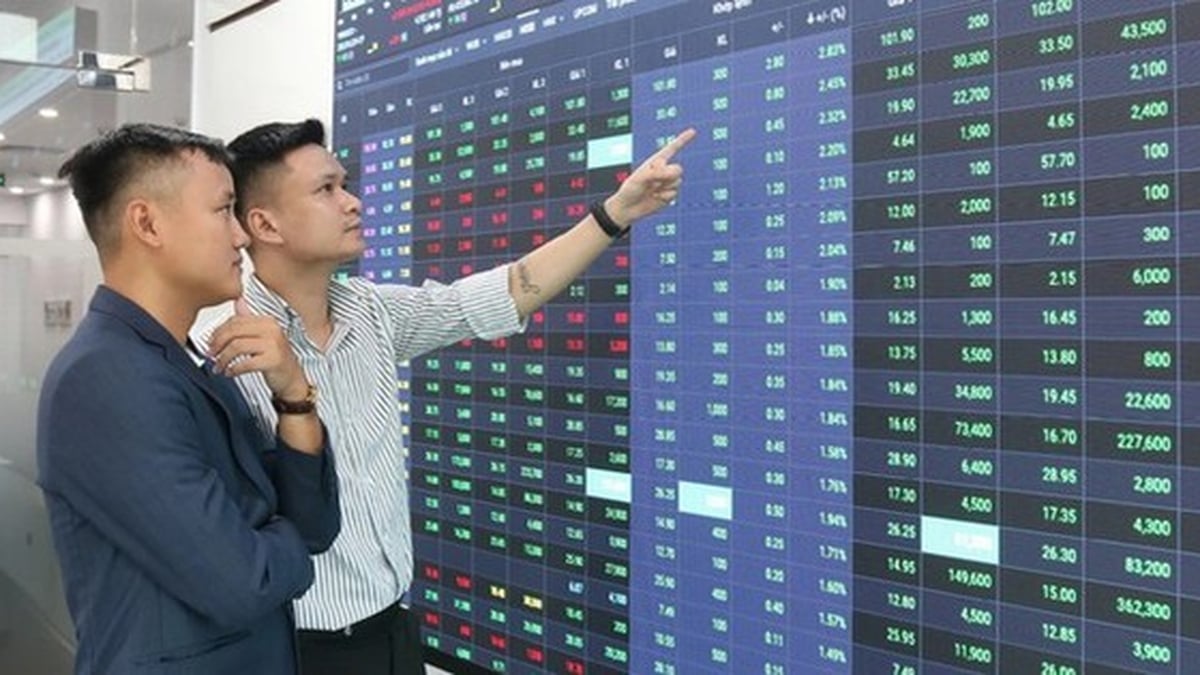The central exchange rate decreased by 3 VND, the index decreased slightly by 0.21 points compared to the previous weekend session or the average of the first 5 months of 2024, the consumer price index increased by more than 4% compared to the same period last year... are some notable economic information in the week from May 27-31.
| Economic news review on May 29 Economic news review on May 30 |
 |
| Economic news review |
Overview
According to data just released by the General Statistics Office, the consumer price index (CPI) in May 2024 increased by 0.05% compared to the previous month, of which 7 groups of goods and services had price indexes increasing, 3 groups of goods decreased in price and 1 group of goods had stable prices.
According to the General Statistics Office, the increase in pork prices due to supply shortages after the African swine fever outbreak in late 2023 and the increase in electricity prices due to hot weather were the main reasons for the CPI increase in May 2024.
CPI increased by 4.44% in May compared to the same period last year, slightly up from 4.4% in April. This is the highest level since January 2023. On average, in the first 5 months of 2024, CPI increased by 4.03% compared to the same period last year.
According to the Ministry of Planning and Investment , inflationary pressure is being affected by international factors, such as fluctuations in oil, food, semiconductor prices, shipping costs, air freight, etc., affecting domestic prices of gasoline, raw materials, transportation, etc. In addition, internal factors, such as adjustments to electricity prices, education and health services, and implementation of wage reform policies, etc., are also being affected.
Core inflation in May 2024 increased by 0.15% compared to the previous month and by 2.68% compared to the same period last year. Thus, on average in the first 5 months of 2024, core inflation increased by 2.78% compared to the same period in 2023, lower than the average CPI (up 4.03%). This is mainly due to the prices of food, gasoline,education services and health services, which are factors that increase the CPI but are excluded from the list of core inflation calculations.
According to experts, from now until the end of the year, operators need to be careful in managing market prices to control inflation when the average CPI in the first 5 months of the year has exceeded the threshold of 4% while the target of controlling inflation in 2024 was decided by the National Assembly at 4.0 - 4.5%. External factors that could cause the CPI to continue to increase in the coming time include risks and challenges from global inflation that continues to be quite high; stagnation and recession in Vietnam's major export markets; the trend of tightening monetary policy continues in countries; geopolitical tensions, epidemics, climate change, ... which can affect food security, energy security and global inflation, ...
Domestic difficulties include factors from the economy itself as well as from price management managed by the State. Specifically, the Vietnamese economy is highly open, the scale of import and export turnover compared to GDP is high, the competitiveness of enterprises is still weak, and it depends heavily on imported raw materials, materials, and machinery from outside.
In addition, the adjustment of prices of State-managed goods (electricity, education, healthcare, gasoline), in which, the price of public services after nearly 4 years of delay or not fully implemented in 2023 will continue to be adjusted in 2024 - 2025.
Along with that, the current prices of medical examination and treatment services and prices of other medical examination and treatment services will be implemented when the Law on Medical Examination and Treatment No. 15/2023/QH15 dated January 9, 2023 of the National Assembly takes effect from January 1, 2024; electricity prices will gradually implement the marketization roadmap by calculating all input costs in the price components; synchronous reform of salary policy from July 1, 2024 may cause a chain effect leading to an increase in many types of goods and services on the market, ...
Therefore, to contribute to controlling inflation, experts recommend that it is necessary to control the main commodities such as food, foodstuffs, gasoline and oil and carefully manage the prices of commodities priced by the State. In addition, it is necessary to continue implementing a reasonable, focused and key expansionary fiscal policy, ensuring the ability to mobilize sufficient capital to meet the needs of effectively implementing socio-economic development tasks, ensuring a balanced state budget; and a flexible monetary policy, especially in managing interest rates and exchange rates to adapt to the unstable and unpredictable operating context.
Domestic market summary week from 27-31/5
In the foreign exchange market during the week of May 27-31, the central exchange rate was adjusted up and down by the State Bank of Vietnam alternately through the sessions. At the end of May 31, the central exchange rate was listed at 24,261 VND/USD, down 3 VND compared to the previous weekend session.
The State Bank of Vietnam's transaction office continues to list the USD buying and selling price at 23,400 VND/USD, the spot selling rate at 25,450 VND/USD in all sessions.
The interbank USD-VND exchange rate cooled down during the week of May 27-31, no longer close to the ceiling price of the State Bank. At the end of the session on May 31, the interbank exchange rate closed at 25,441 VND/USD, down 36 VND compared to the session at the end of the previous week.
The dollar-dong exchange rate on the free market increased last week. At the end of the session on May 31, the free exchange rate increased by 45 VND for buying and 75 VND for selling compared to the previous weekend session, trading at 25,775 VND/USD and 25,855 VND/USD.
In the interbank money market during the week of May 27-31, interbank VND interest rates decreased sharply in all terms through all sessions. Closing on May 31, interbank VND interest rates were traded around: overnight 2.93% (-2.22 percentage points); 1 week 3.70% (-1.58 percentage points); 2 weeks 4.45% (-0.90 percentage points); 1 month 5.0% (-0.45 percentage points).
Interbank USD interest rates fluctuated little last week. On May 31, the interbank USD interest rate closed at: overnight 5.29% (-0.01 percentage point); 1 week 5.34% (+0.01 percentage point); 2 weeks 5.40% (unchanged) and 1 month 5.43% (-0.02 percentage point).
In the open market from May 27-31, in the mortgage channel, the State Bank offered 2 terms of 7 days and 14 days with a volume of 30,000 billion VND, the interest rate remained at 4.5%. There were 11,684.1 billion VND in winning bids and 27,888.58 billion VND in maturity last week.
The State Bank of Vietnam offered 28-day SBV bills for auction, bidding interest rates in all sessions. At the end of the week, a total of VND30,200 billion was won, the winning interest rate in the first two sessions of the week remained at 4.20%/year, and increased to 4.25% in the last three sessions. In addition, VND6,700 billion matured last week.
Thus, the State Bank of Vietnam net withdrew VND 39,704.48 billion from the market last week through the open market channel, the volume circulating on the mortgage channel was VND 81,766.82 billion and the volume of circulating treasury bills was VND 76,290.0 billion.
On the bond market on May 29, the State Treasury called for bids of VND9,000 billion in government bonds, with the winning bid volume only reaching VND1,050 billion, equivalent to 12%. Of which, the 5-year term mobilized VND1,000 billion/VND2,500 billion bid and the 30-year term mobilized VND50 billion/VND1,000 billion bid. The 7-year, 10-year and 15-year terms called for bids of VND500 billion, VND3,000 billion and VND2,000 billion respectively, but there was no winning bid volume. The winning bid interest rate for the 5-year term was 1.80% (+0.05 percentage points compared to the previous auction) and for the 30-year term was 3.10% (+0.04 percentage points).
This week, on June 5, the State Treasury plans to bid for VND9,000 billion in government bonds, of which VND2,000 billion will be offered for 5-year terms, VND3,000 billion for 10-year terms, VND2,000 billion for 15-year terms, VND1,000 billion for 20-year terms, and VND1,000 billion for 30-year terms.
The average value of Outright and Repos transactions in the secondary market last week reached VND9,303 billion/session, down from VND11,702 billion/session the previous week. Government bond yields last week decreased for terms from 5 years to 15 years and remained unchanged for the remaining terms. At the close of the session on May 31, government bond yields were trading around 1 year 1.87% (unchanged); 2 years 1.88% (unchanged); 3 years 1.9% (unchanged); 5 years 2.04% (-0.01 percentage point); 7 years 2.31% (-0.04 percentage point); 10 years 2.85% (-0.07 percentage point); 15 years 3.02% (-0.04 percentage point); 30 years 3.19% (unchanged).
In the week of May 27-31, the stock market indices continued to fluctuate between sessions. At the end of the session on May 31, VN-Index stood at 1,261.72 points, down slightly by 0.21 points (-0.02%) compared to the previous weekend; HNX-Index increased by 1.37 points (+0.57%) to 243.09 points; UPCoM-Index increased by 1.48 points (+1.57%) to 95.88 points.
Average market liquidity reached nearly VND23,665 billion/session, down from VND30,100 billion/session the previous week. Foreign investors continued to net sell nearly VND2,750 billion on all three exchanges.
International News
The United States recorded many important economic indicators last week. First, the US Bureau of Economic Analysis (BEA) announced that the country's GDP in the first quarter of 2024 increased by only 1.3% compared to the previous quarter, adjusted down from the 1.6% increase according to the first statistical results, but still more positive than the adjusted forecast of 1.2%. This is the second consecutive quarter that US GDP has shown a slowdown, when the third quarter of 2023 increased strongly by 5.2% and the fourth quarter of 2023 increased by 3.2%.
Regarding inflation, the US core PCE price index increased by 0.2% month-over-month in April, lower than the forecast of a continued increase of 0.3% as in March. Compared to the same period in 2023, the US core PCE increased by 2.8% in April, flat compared to the increase in the previous month.
Next, the Conference Board survey said the US consumer confidence index was at 102 points in May, up quite strongly from 97.5 points in April, contrary to the forecast of a slight decrease to 96.0 points. This is the first month of improvement in consumer confidence after 3 consecutive months of decline.
In the labor market, the number of initial jobless claims in the US in the week ending May 25 was 219 thousand, up slightly from 216 thousand the previous week and almost in line with the forecast of 218 thousand. The average number of claims in the last 4 weeks was 222.5 thousand, up slightly by 2.5 thousand compared to the previous 4 weeks.
Finally, in the real estate market, pending home sales in the US fell sharply by 7.7% month-over-month in April after rising 3.6% in the previous month, much deeper than the forecast 1.1% decline. Compared to the same period in 2023, April sales recorded a 7.4% decline.
This week, the world continues to wait for important information about the US labor market, including unemployment rate, job growth and average income, to be announced on the evening of June 7, Vietnam time.
Australia also received some notable news last week. First, on inflation, the Australian Bureau of Statistics (ABS) said that the headline consumer price index (CPI) in this country increased by 3.6% compared to the same period in April, higher than the increase of 3.5% in the previous month and contrary to the forecast of a slowdown to 3.4%.
In addition, the core CPI in April also increased to 4.1% year-on-year from 4.0% recorded in March. In March, the headline CPI in Australia remained stable with an increase of 3.4% year-on-year. The main reasons for the increase in April inflation were mainly due to the price of petrol, health care and housing costs.
Next, in the construction market, the volume of completed construction works in Australia decreased sharply by 2.9% compared to the previous quarter in the first quarter of 2024 after increasing by 1.8% in the previous quarter, contrary to expectations of a slight increase of 0.6%. Compared to the same period in 2023, the volume of construction works in the first quarter of the year increased by 1.8%.
Building permits in Australia also fell 0.3% month-on-month in April after rising 2.7% in the previous month, against expectations of a further increase of 1.8%. Compared to the same month in 2023, permits in April fell 3.5%.
Finally, total retail sales in Australia rose just 0.1% month-on-month in April after falling 0.4% in the previous month, below expectations of a 0.3% increase. Compared to the same period in 2023, retail sales in April recorded a 1.3% increase.
Source: https://thoibaonganhang.vn/diem-lai-thong-tin-kinh-te-tuan-tu-27-315-152264-152264.html































































































![[Infographic] In 2025, 47 products will achieve national OCOP](https://vphoto.vietnam.vn/thumb/402x226/vietnam/resource/IMAGE/2025/7/16/5d672398b0744db3ab920e05db8e5b7d)





Comment (0)